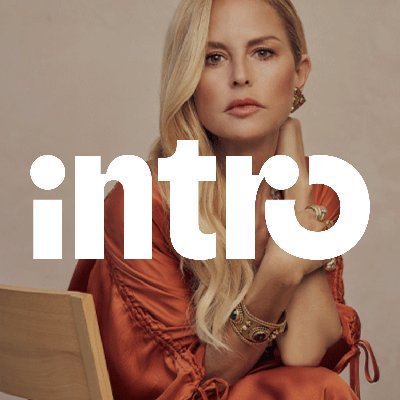
Content isn’t just another marketing strategy. It’s your moat.
The best startups don’t treat content as filler—they treat it as a core product feature. Done right, it drives customer acquisition, creates loyalty loops, and builds cultural relevance that no amount of paid spend can replicate.
- 1. beehiiv (B2B SaaS, founded 2021)
- 2. Liquid Death (CPG, founded 2018)
- 3. Hello Sunshine (Media & Production, founded 2016)
- 4. Notion (B2B SaaS, founded 2016)
- 5. Levels (Consumer Health Tech, founded 2019)
- 6. Ramp (B2B Fintech, founded 2019)
- 7. Feastables (DTC CPG, founded 2022)
- Bonus: Andreessen Horowitz (a16z) (VC, founded 2009)
- Wrapping Up
But here’s the catch: most founders still underestimate content. Meanwhile, their competitors are building sophisticated distribution engines with newsletters, communities, and podcasts.
If you want to get an edge in your content strategy, you need to study the best. Each of the examples below has developed a distinctive approach to content marketing that fuels growth and builds brand.
Here are 7 companies you should follow closely, plus one bonus example worth noting.
1. beehiiv (B2B SaaS, founded 2021)
Strategy: Case studies and growth playbooks that double as onboarding.
beehiiv is a newsletter platform built by former Morning Brew operators, so it’s no surprise that its marketing is its product. The company publishes deep dives into how creators grow their newsletters, complete with screenshots, subscriber metrics, and monetization tactics.
Formats: Case studies, tactical how-to guides, repeatable playbooks.
Channels: Blog, email, LinkedIn, SEO-first content.
Signature move: The content doubles as a demo. Every case study shows how beehiiv’s referral tools, segmentation, and monetization features work in practice.
Why it works: Instead of abstract thought leadership, beehiiv gives operators exactly what they want: proven tactics from peers. Readers don’t just learn about growth. They learn how to do it with beehiiv. That alignment is the holy grail of SaaS content.
2. Liquid Death (CPG, founded 2018)
Strategy: Turn water into a meme machine.
Liquid Death’s genius is that it doesn’t sell water—it sells content. The brand has built a cult following by turning hydration into a cultural spectacle.
Formats: Viral videos, absurdist ads, shock-driven campaigns likethe “Belted Diaper” collab with Depends.
Signature move: Outrageous stunts that drive earned media and word-of-mouth.
Why it works: Every campaign is engineered for sharability. By leaning into metal aesthetics and dark humor, Liquid Death makes fans feel like insiders rebelling against the boring bottled water establishment. The content doesn’t just entertain—it becomes the brand.
3. Hello Sunshine (Media & Production, founded 2016)
Strategy: Content-as-brand, powered by Reese Witherspoon’s book club.
Hello Sunshine was founded to tell women-centered stories across film, TV, and digital. Its smartest marketing engine? Reese’s Book Club.
Formats: Monthly book picks, Instagram storytelling, community discussion, cross-promotion with film/TV projects.
Channels: Instagram, newsletter, partnerships.
Signature move: Selecting books that later become Hello Sunshine-produced shows and films (Little Fires Everywhere, Daisy Jones & the Six).
Why it works: The book club creates a trusted, engaged audience long before the product (film or series) ever launches. In other words, Reese built a distribution funnel for IP. By the time a story hits the screen, it has a built-in fan base.
4. Notion (B2B SaaS, founded 2016)
Strategy: Community + templates as the ultimate growth loop.
Notion’s content marketing isn’t a blog. It’s an ecosystem of user-generated templates and community stories.
Formats: Template gallery, community showcases, tutorial videos, ambassador-led events.
Channels: SEO-optimized galleries, YouTube, social media, community platforms.
Signature move: Templates function as both content and product. They’re searchable, sharable, and drive direct adoption.
Why it works: Templates are infinitely SEOable (“Notion budget tracker,” “Notion roadmap template”). Each search result is a mini funnel into Notion. Combine that with global community ambassadors telling their own stories, and you get a growth flywheel where customers market the product better than ads ever could.
5. Levels (Consumer Health Tech, founded 2019)
Strategy: Editorial-first, product-second.
Levels, a metabolic health startup, launched by investing heavily in long-form editorial content years before its product was fully available.
Formats: Expert essays, physician-reviewed blog posts, podcasts, founder interviews.
Channels: Blog, podcast, YouTube.
Signature move: Building brand authority through valuable, evidence-backed content.
Why it works: By educating the public on metabolic health, Levels established credibility in a noisy wellness space. When readers are finally ready to try a continuous glucose monitor, Levels is the obvious choice. More than simply selling a product, the company has educated an entire category into existence.
6. Ramp (B2B Fintech, founded 2019)
Strategy: The CFO thought-leadership engine.
Ramp, a corporate card and expense platform, operates like a modern trade publisher for finance leaders.
Formats: Benchmarking reports, workshops, long-form guides on topics like “how to run a burn-rate analysis.”
Channels: Blog, LinkedIn, email, webinars.
Signature move: Original research that CFOs can’t find anywhere else, presented in practical playbooks.
Why it works: Ramp’s content is precision-targeted to decision-makers. By publishing data and resources that help CFOs look good in front of their boards, Ramp builds trust and urgency. Content naturally routes readers to product demos, making the jump from article to sales funnel seamless.
7. Feastables (DTC CPG, founded 2022)
Strategy: Creator-native distribution with MrBeast.
Feastables, MrBeast’s chocolate brand, is one of the clearest examples of entertainment as distribution.
Formats: Tent-pole YouTube videos (tens of millions of views), product cameos, narrative “feuds” around flavors.
Channels: YouTube, TikTok, retail displays, live events.
Signature move: Product launches tied to high-stakes challenges and viral storytelling.
Why it works: Instead of pouring money into ads, Feastables rides MrBeast’s built-in audience of 250M+ subscribers. Content and commerce are indistinguishable, as each viral video acts as a global launch campaign.
Bonus: Andreessen Horowitz (a16z) (VC, founded 2009)
Strategy: A VC firm with a mini production studio.
While venture firms spinning up podcasts and newsletters isn’t new anymore, a16z still sets the standard.
Formats: a16z Podcast, newsletters, deep research pieces, YouTube explainers.
Channels: Podcast platforms, Substack, social media.
Signature move: Founder- and operator-focused insights delivered at a cadence that rivals actual media companies.
Why it works: Content gives a16z leverage. By owning the conversation around emerging tech trends, the firm attracts founders, LPs, and press attention before competitors do. Even after 15 years, their strategy proves that consistent, high-quality content builds durable influence.
Wrapping Up
These eight examples highlight a single truth: content marketing is infrastructure.
beehiiv shows how to turn playbooks into onboarding.
Liquid Death proves stunts can build billion-dollar cults.
Hello Sunshine demonstrates how fandom can be a funnel.
Notion uses community as an infinite SEO engine.
Levels builds trust by educating an entire category.
Ramp turns reports into sales accelerators.
Feastables fuses creator-led content with commerce.
a16z proves media dominance compounds for decades.
The lesson for founders? Don’t wait for the “right time” to invest in content. Pick one of these playbooks, adapt it to your own business, and start building your moat now.
Because in the long run, content is how the world discovers, engages with, and remembers your brand.



